AutoContour v2.6 Offers 95 Brand New Structure Models
New structure models include notable additions for brachytherapy, MR male pelvis, cardiac substructures, ESTRO breast nodes, and more.
Uncover additional time savings with standardized, automated planning structure generation for plan-ready contours in seconds.
Imagine reducing your total contouring time by up to 84%. That's possible with AutoContour. But there's more to this tool than fast, accurate OARs.
Yes, AutoContour begins by automatically generating patient-specific structures. This initial step alone offers significant time savings compared to manual contouring methods. Yet, a critical and often time-consuming part of the process remains: generating planning structures.
These are the procedure-based contours generated based on specific geometric operations that are generated manually after AI contours are produced. They typically require that the final version of the organs-at-risk and target structures be approved by a clinical expert such that there is a fixed source of truth that the dependent structures are based upon. These include appropriate margin structures (eg. PTVs, PRVs) and optimization regions (e.g. avoidance, dose control rings, and overlap) that are critical for planning and constraint evaluation.
Historically, these steps (e.g., margin, crop, and overlap) are generated manually one at a time within the treatment planning system, but for increasingly complex treatment plans that contain a large number of source and planning structures, this manual process can be very time consuming and error prone.
Can we make it less painful? Yep.
AutoContour allows for the automation of all planning structures using site-specific templates that provide powerful standardization. When combined with AutoContour’s fast contour generation, automated review, and registration tools, these automated planning structures provide additional time savings and help to further streamline the contouring process.
Single-Step Planning Structures
In AutoContour's main workspace, users can effortlessly create and edit planning structures. The user-friendly Planning Structure Table allows users to quickly generate planning structures for any patient scan when desired. This workspace offers the following planning structure options:
As an example, the margin tool can be used to create any symmetric or asymmetric, inner or outer margins. Clinically, this might be useful for the generation of a CTV based on the physician-drawn GTV. To do this, add a new structure titled CTV to the planning structures workspace, then choose the margin operation and enter the preferred margin, as well as the structure to apply the margin to, the GTV.
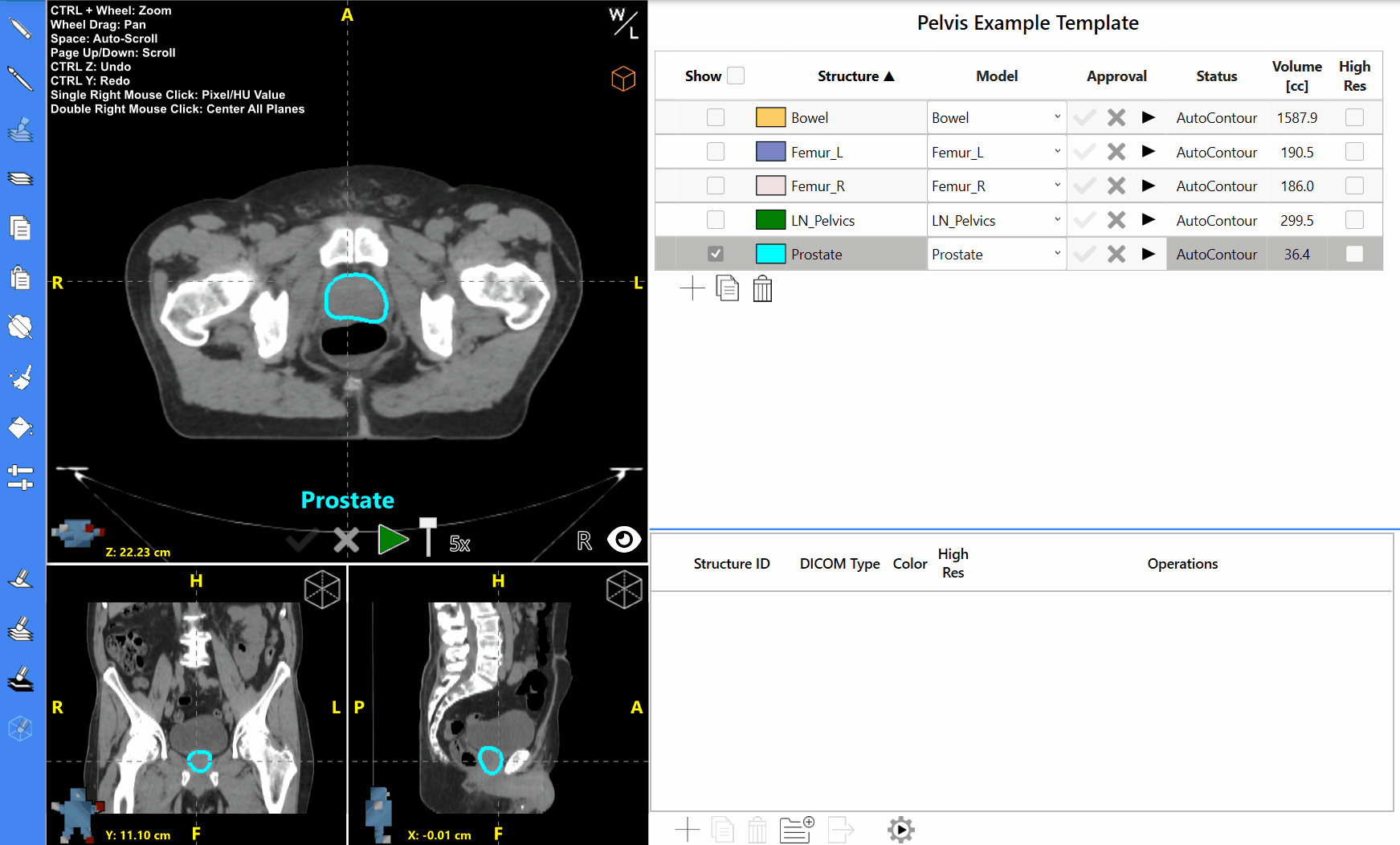 Generation of a CTV using the Margin Tool for a Male Pelvis Scan
Generation of a CTV using the Margin Tool for a Male Pelvis Scan
Introduction to Planning Structure Templates
While AutoContour offers the addition of planning structures on-the-fly, it's true power lies in the use of templates. Let’s dig in to template and discuss how to generate and use planning structure templates.
How to Generate Planning Structure Templates
Planning structure templates are generated and configured in the Admin workspace within AutoContour, and can be designed for global use—the templates will apply to all users—or for individual use. These are downloadable here or available on your Radformation account page.
Creating or changing global templates is done in the Planning Structures workspace, while unique templates for individual users are managed under the Users tab. Creating a template is as easy as pressing the + button and creating whatever operation or logic is required for the structure. Color and DICOM type can be changed for each planning structure as well. Templates can accept any number of structures, each of which can have any number of operations.
Global Planning Structure Template
Using Planning Structure Templates
These templates are now available for quick and easy recall on any scan in the main AutoContour workspace. When a template is selected at the bottom of the planning structures table, it will then populate the table. Then to generate these structures just click the Generate Planning Structures icon.
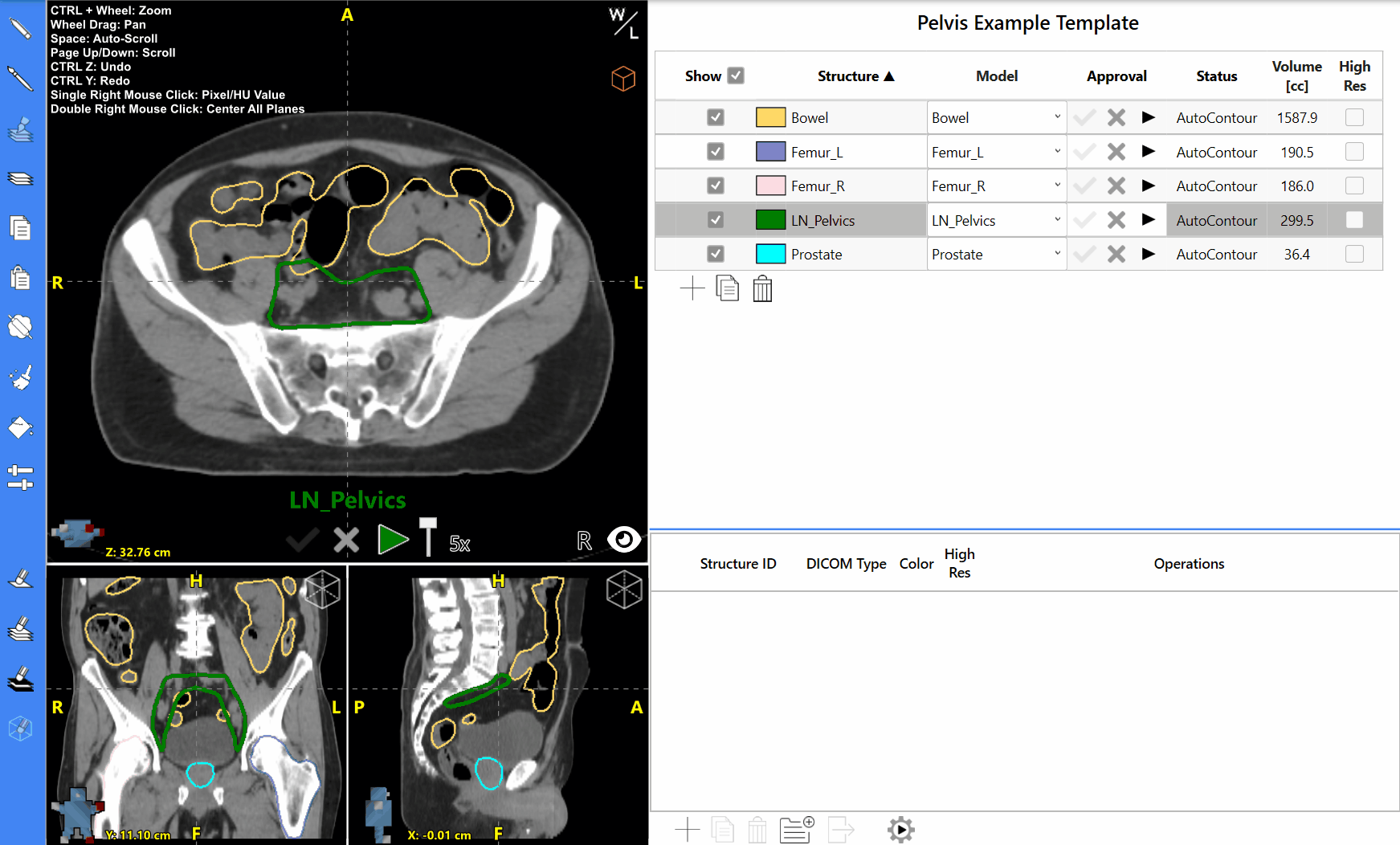
Using a User-Specific Planning Structure Template to Generate Planning Structures
But wait, it gets better. This process can be even simpler if the desired planning structures are added to site-specific AutoContour structure templates. By doing this, the planning structure table will automatically populate when choosing a structure template. To generate these post-planning contours, just click the generate planning structures button after structure processing completes.
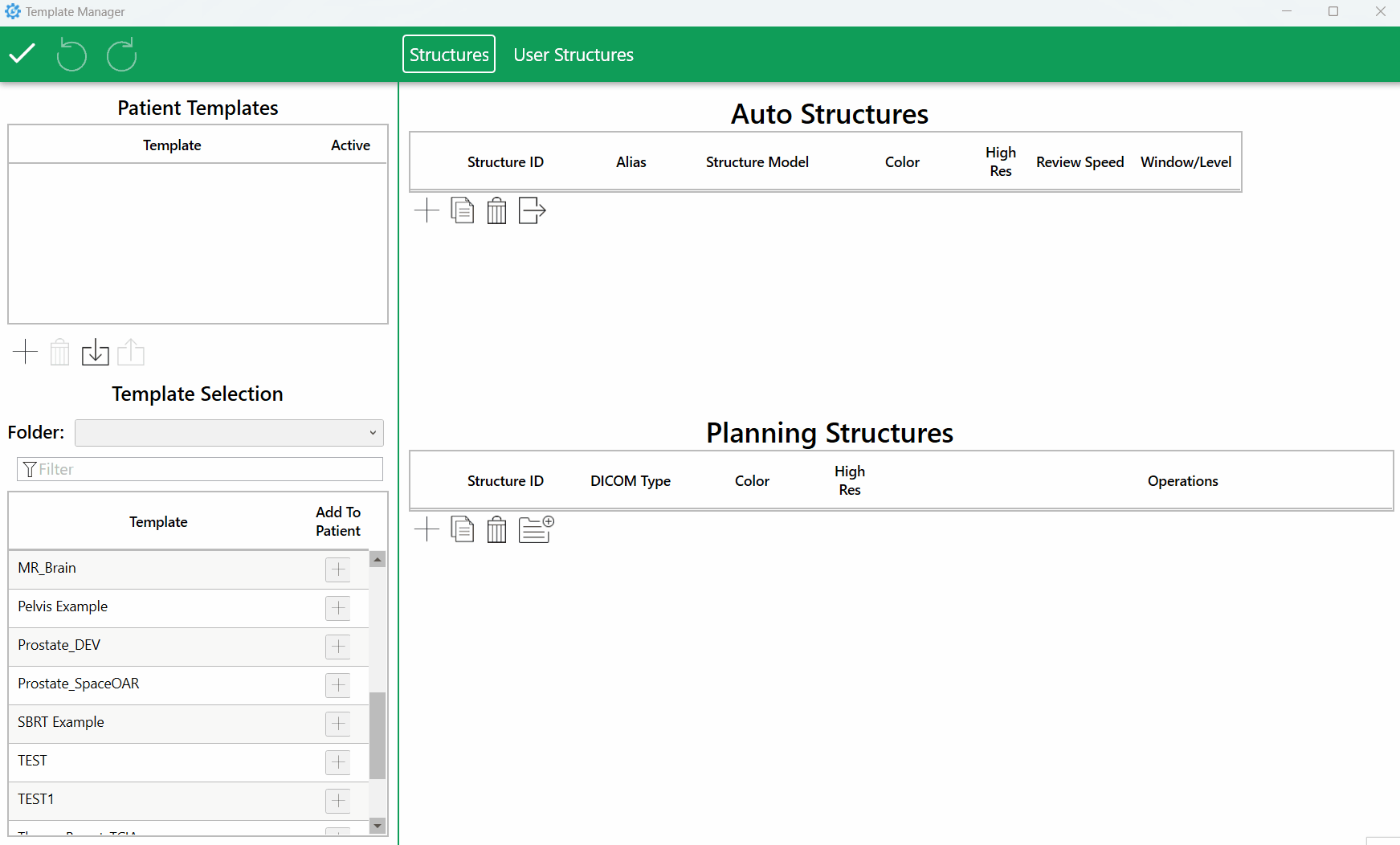 Using Planning Structures in a Structure Template
Using Planning Structures in a Structure Template
Multi-Step Planning Structures
It’s easier than ever to conform to all of your unique contouring needs, even for the creation of structures that require a few steps (or more!) Here we’ll detail a couple of scenarios where creating specific planning structures can get a little bit complex—and where AutoContour can simplify things with templates.
Creation of Expansion on AutoContour Structures
Multiple operations may be required to create a single planning structure. In fact, many operations may need to be performed on an autogenerated structure itself. For example, AutoContour’s Chestwall_OAR model uses a built-in 2 cm margin, but some treatment planning guidelines require a margin of 3 cm. Using planning structures this is a quick and easy fix.
The Planning Structures workspace allows the generation of the extra 1 cm margin using the margin operation. By adding this additional margin, the Chestwall_OAR_3cm structure may be overlapping with other OARs within this region, such as Liver. This can again be easily accounted for by adding some cropping operations to the planning structure itself as shown below.
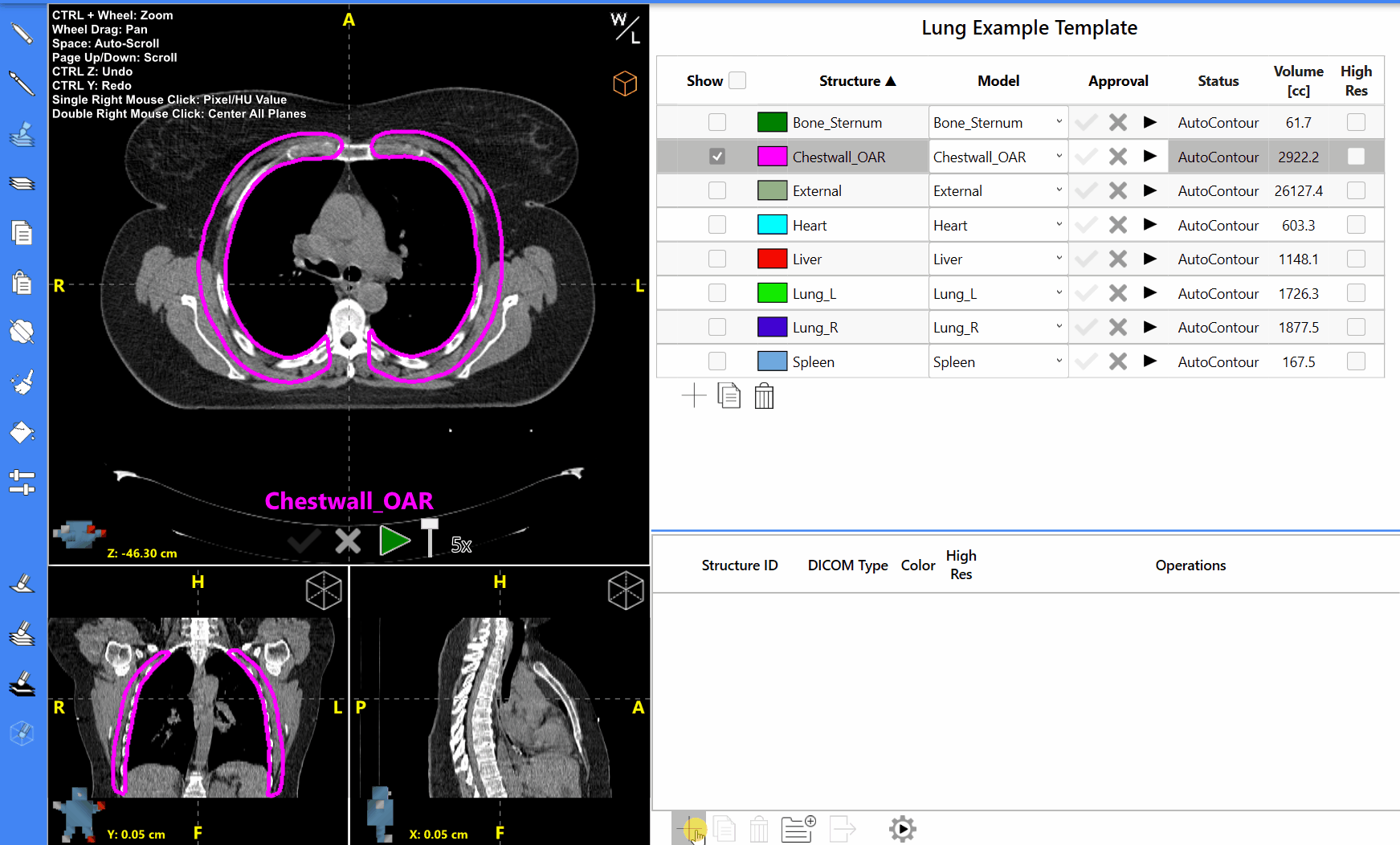
Chestwall_OAR Expansion Generation
Cropping AutoContour Structures within Margin of GTV/PTV
AutoContour models are trained to contour the entirety of any given structure found in a diagnostic image. Clinically, this may not be necessary, and the OAR may need only be contoured within a certain range, perhaps in the region of the target or GTV. Using the tools provided in the Planning Structures workspace, it is quick and easy to erase components outside this margin. In the example shown below, the process of cropping the esophagus contour to the region of the GTV is shown:
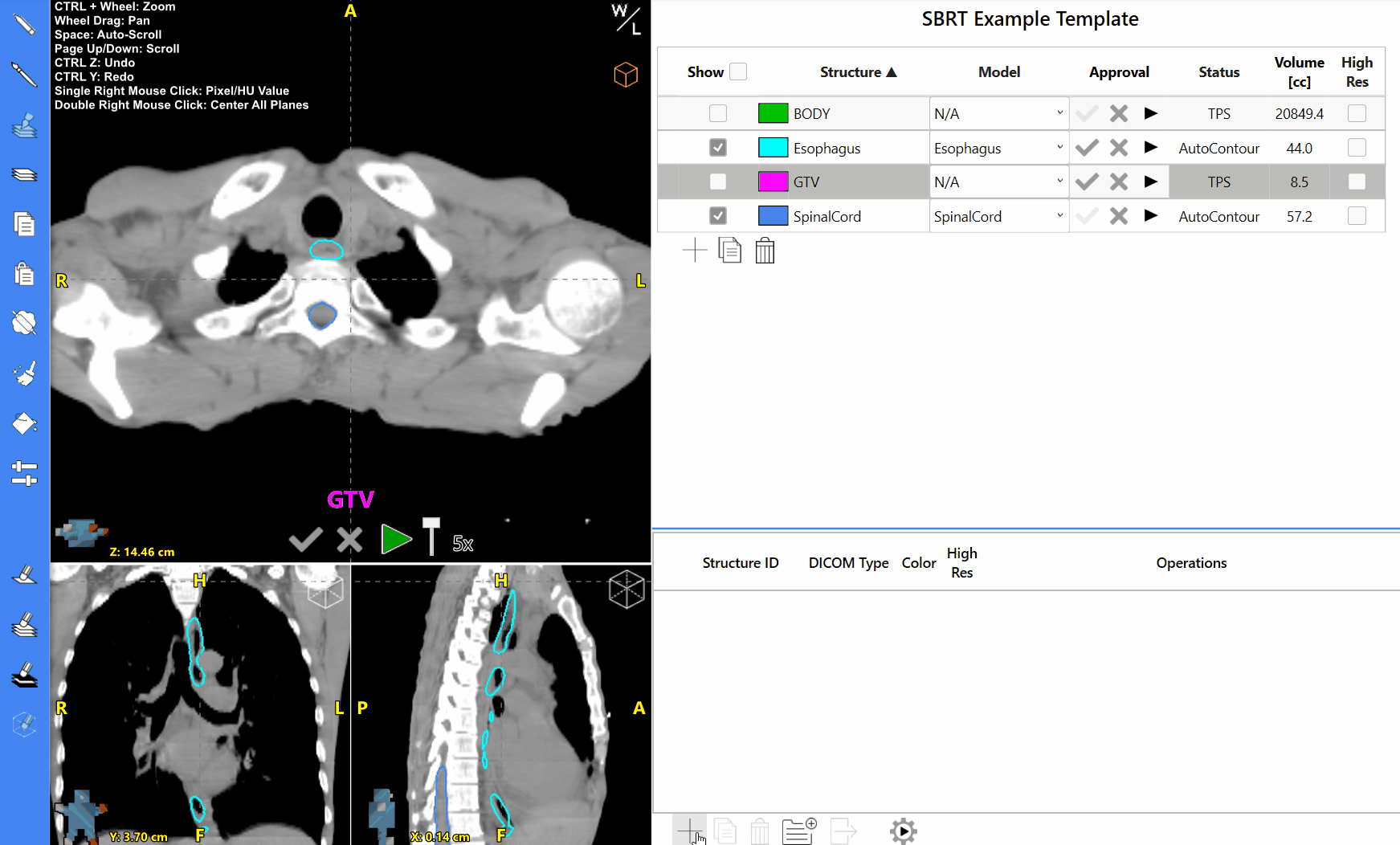
Editing OAR to be within Margin of GTV
Regular Expression Planning Structures Generation
To truly maximize the customization offered in the Planning Structures space, users can leverage the power of regular expressions. Regular expressions are strings of characters that, in the proper sequence, allow AutoContour to identify patterns in text and deliver results based on those patterns. Regular expressions are supported in the table, which allow operations to be performed on all structures that follow a naming pattern.
Generation of Multiple Structures
Using regular expressions can be useful for a number of cases. In a relevant clinical example, it might be incredibly useful in the context of a multi-met SRS case to create PTV expansions from many physician-drawn GTVs in a single command.
Creating PTVs using the margin tool follows the same basic process when using regular expressions, but the values entered in the textboxes will use regular expressions form. Using a naming pattern with trailing characters as an example, after selecting the margin tool a planning structure ID should be entered, ^PTV$1$, into the textbox. This ensures the structures generated will have the correct trailing characters appended to the ID, PTV1 or PTV_L.
Next, a source structure, in this case ^GTV(.+)$ is entered into the textbox, ensuring that any structure with an ID that includes “GTV” and a unique trailing character will be used to generate the corresponding PTV with a unique trailing character. Having filled the textboxes the generate structures button can be used to run the planning structures. The newly created PTVs will populate in the structure table with a Generated status.
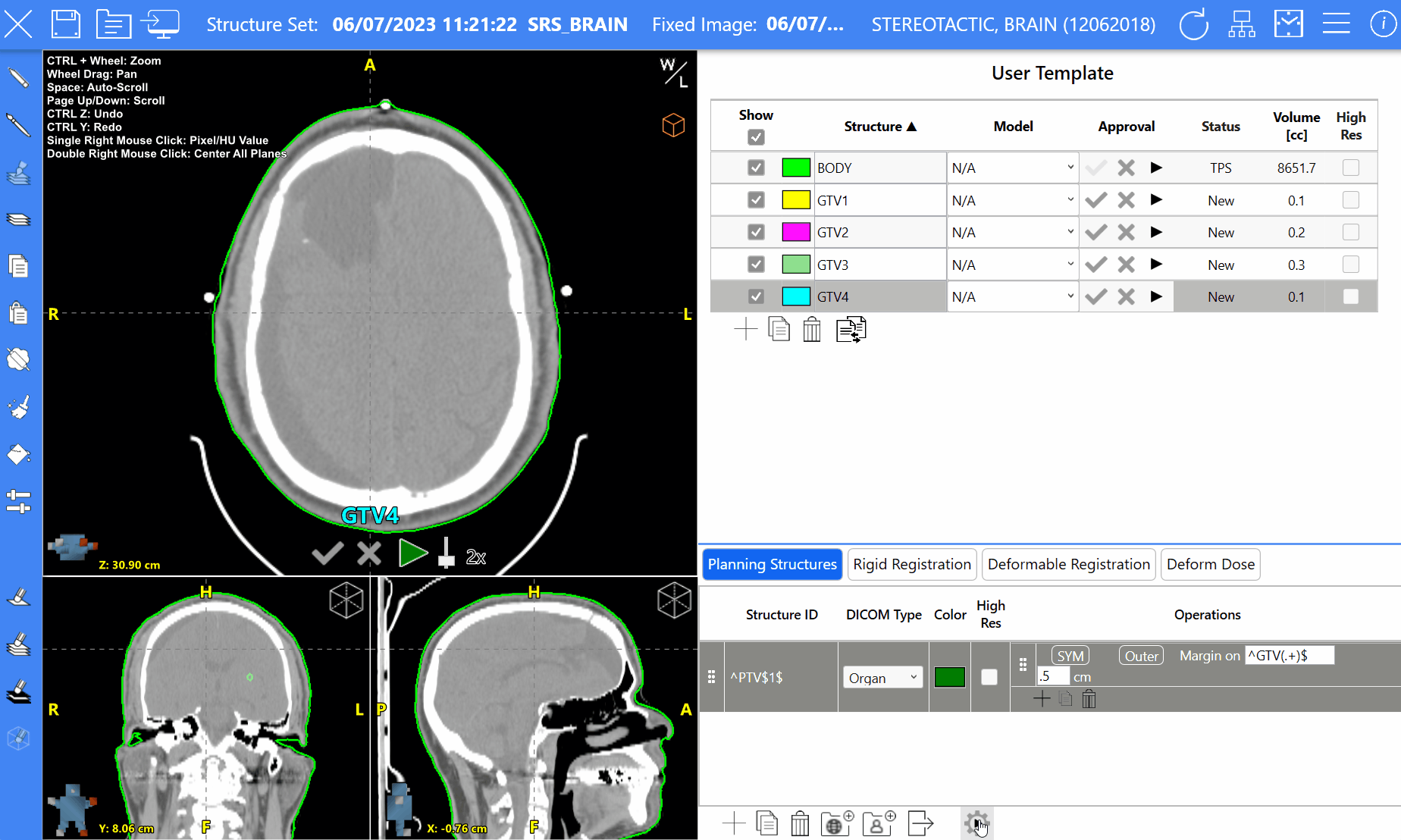
Creating Multiple PTVs from Multiple GTVs
Merge Multiple Structures to a Single Structure
Building on the example above, it may be advantageous to combine all the generated PTVs into a single structure, a PTV Total. To do this, create a new planning structure, enter the ID to be used— PTV_Total—and choose the combine operation. With the combine operation there will be two source ID textboxes, but when using regular expressions these IDs will have the same value, ^PTV(.+)$. This ensures all structures that start with “PTV” will be combined into the PTV_Total structure. The newly created PTV Total structure will populate in the structure table with a Generated status.
And of course, the good news: regular expressions are not limited to on-the-fly planning structures. They can be incorporated into any planning structure template for added efficiency and standardization. Click here to download our Brain Regex planning structure template.
For more information on regular expressions, check out the Radformation FAQ blog. For anything else AutoContour-related, consult the user’s manual.
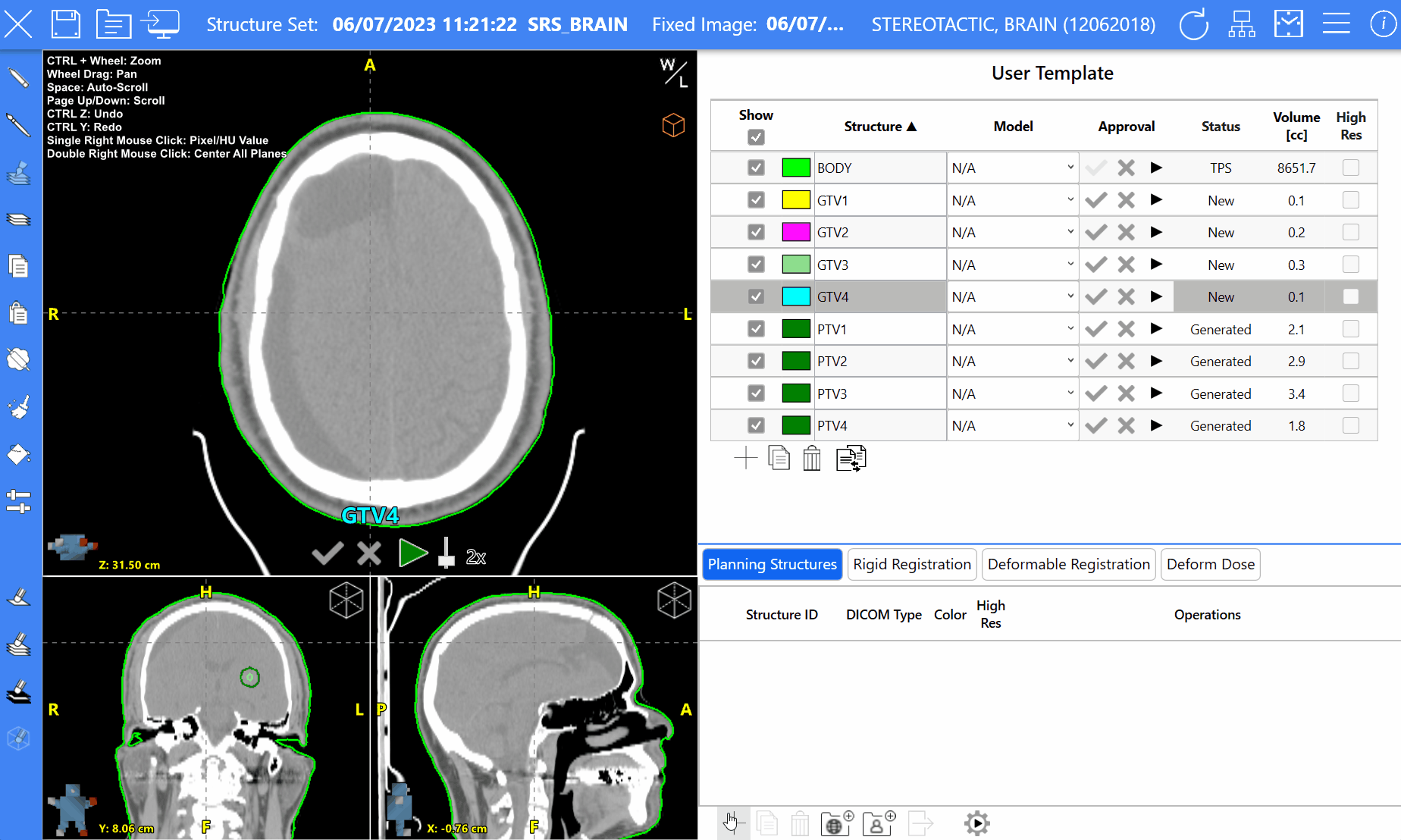
Creation of a PTV_Total Structure from Multiple PTVs
Conclusion
We’re all aware that there is more to creating a plan-ready structure set than simply delineating OARs. Regardless where your contours come from—whether you’re using AI contouring or doing the job manually—planning structures are a critical step in modern treatment planning.
Thankfully, there’s more to AutoContour than just fast AI-generated structures. Our Planning Structures workspace allows for additional structure generation without leaving AutoContour. Better yet, by carefully structuring templates and regular expressions to tailor AutoContour to your needs, planning structure creation is easier and faster than ever before. But don't take our word for it. Click on the link below to schedule a demo to learn more.
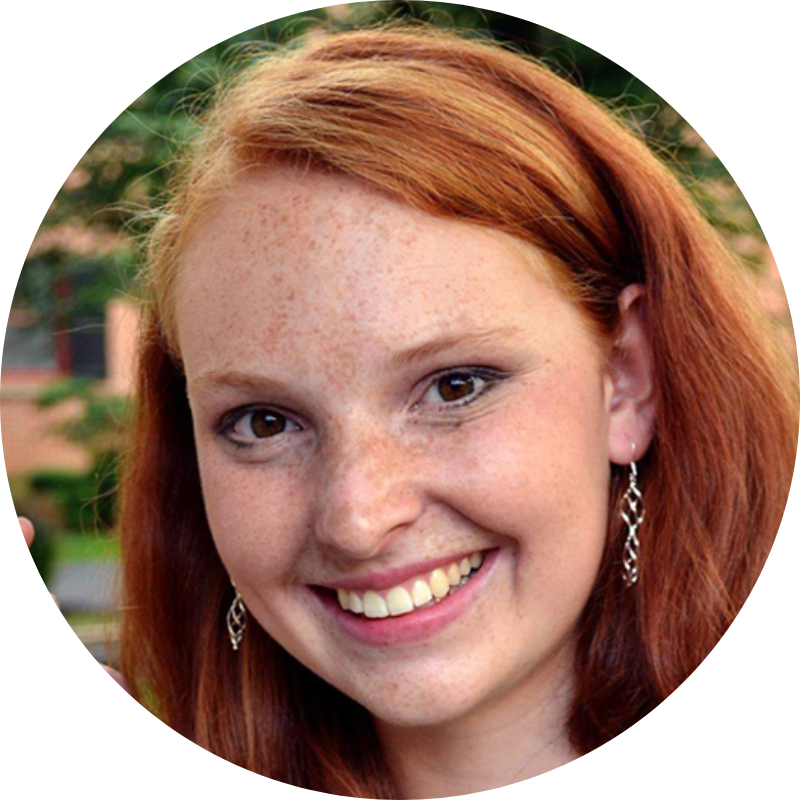
After working with Radformation as part of an industry cooperative while pursuing her medical physics MS at Hofstra University, Carly now contributes to the AutoContour team as the Product Manger for AutoContour Models. In her free time she enjoys planning game nights with her friends and family.
Related tags: Company & Product
New structure models include notable additions for brachytherapy, MR male pelvis, cardiac substructures, ESTRO breast nodes, and more.
More MR Models, New Vertebral Bodies, and Model Variations Added in Latest Structure Model Release
Addressing clinical needs in the release of version 1.8 with brand new structure models
Leave a comment